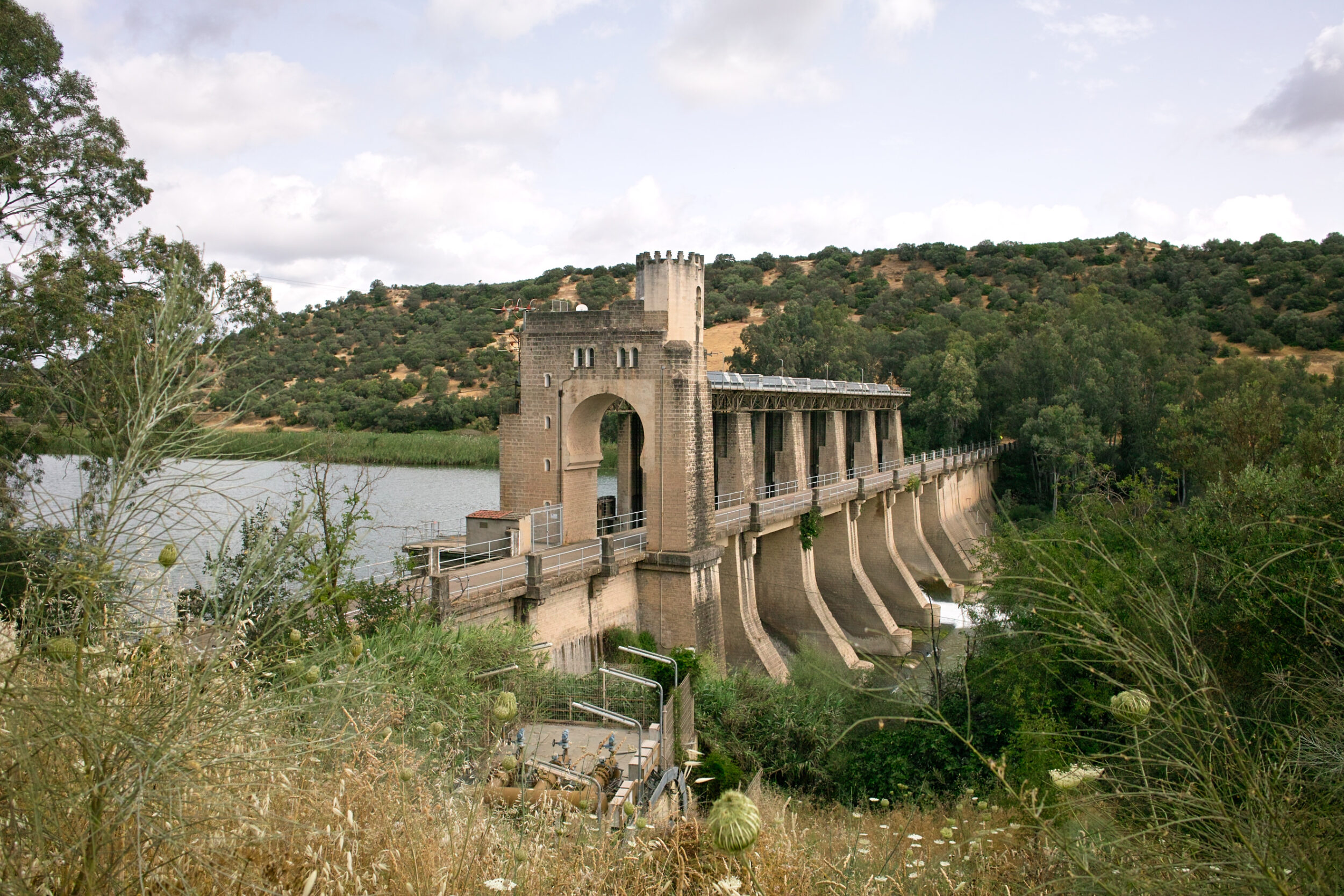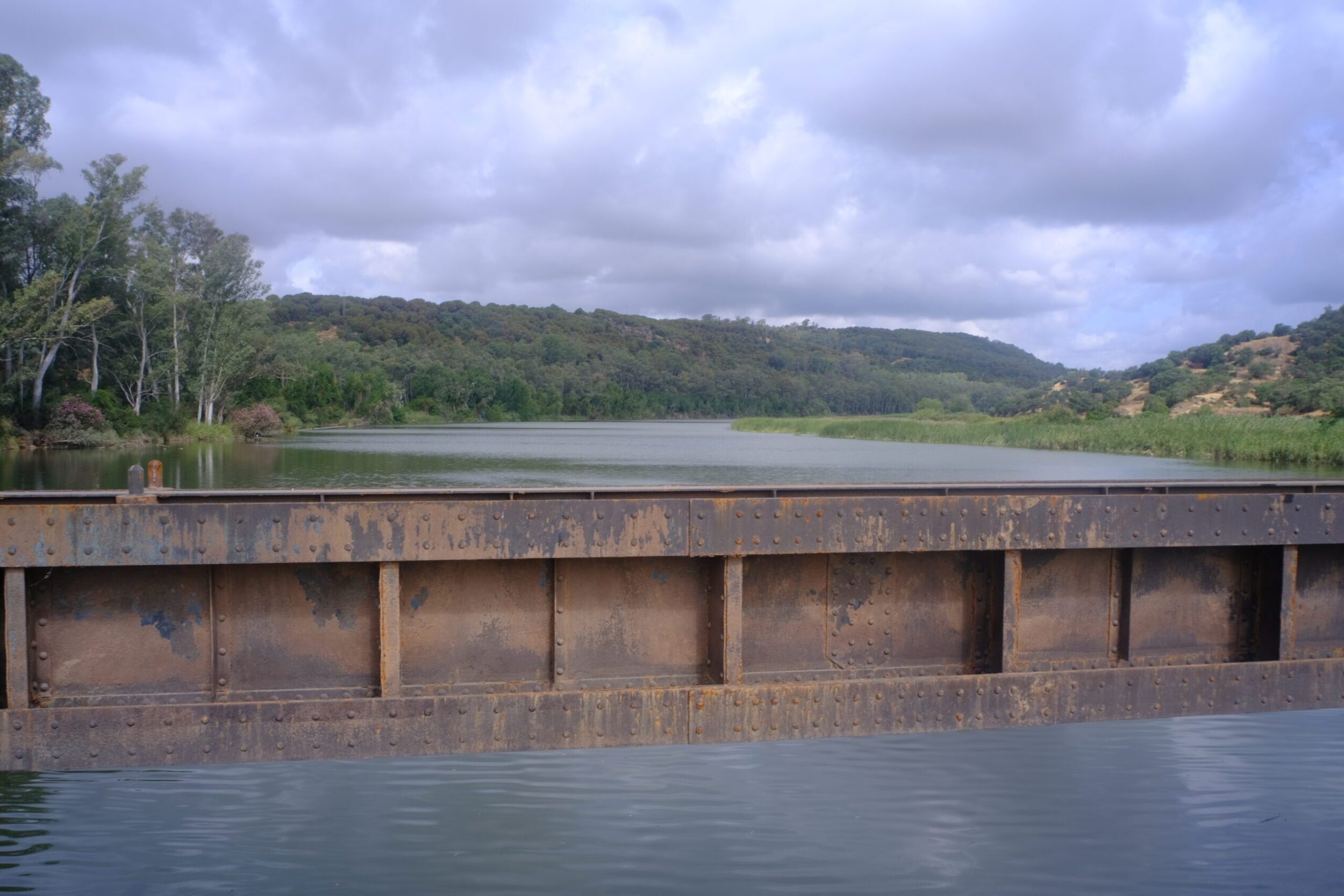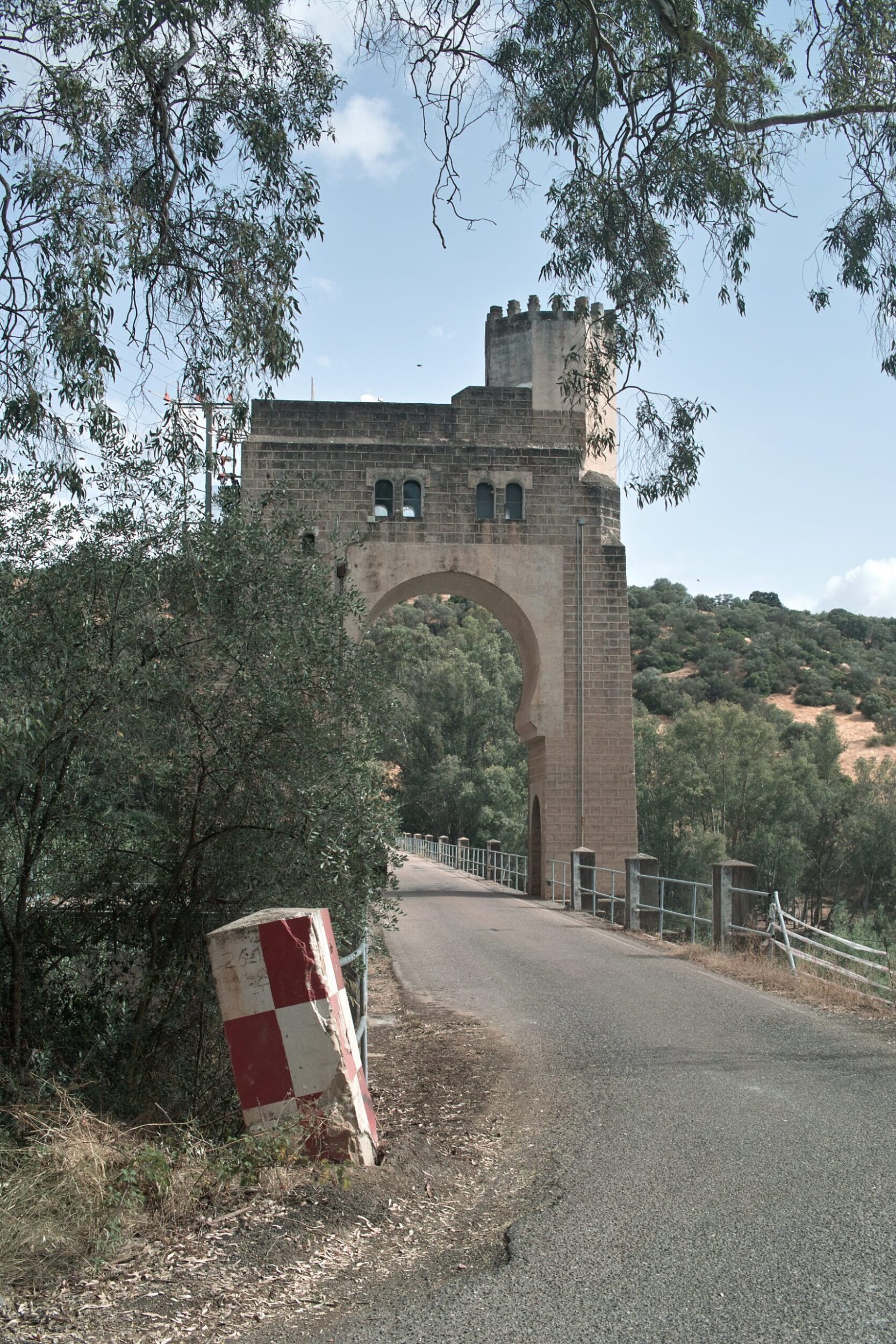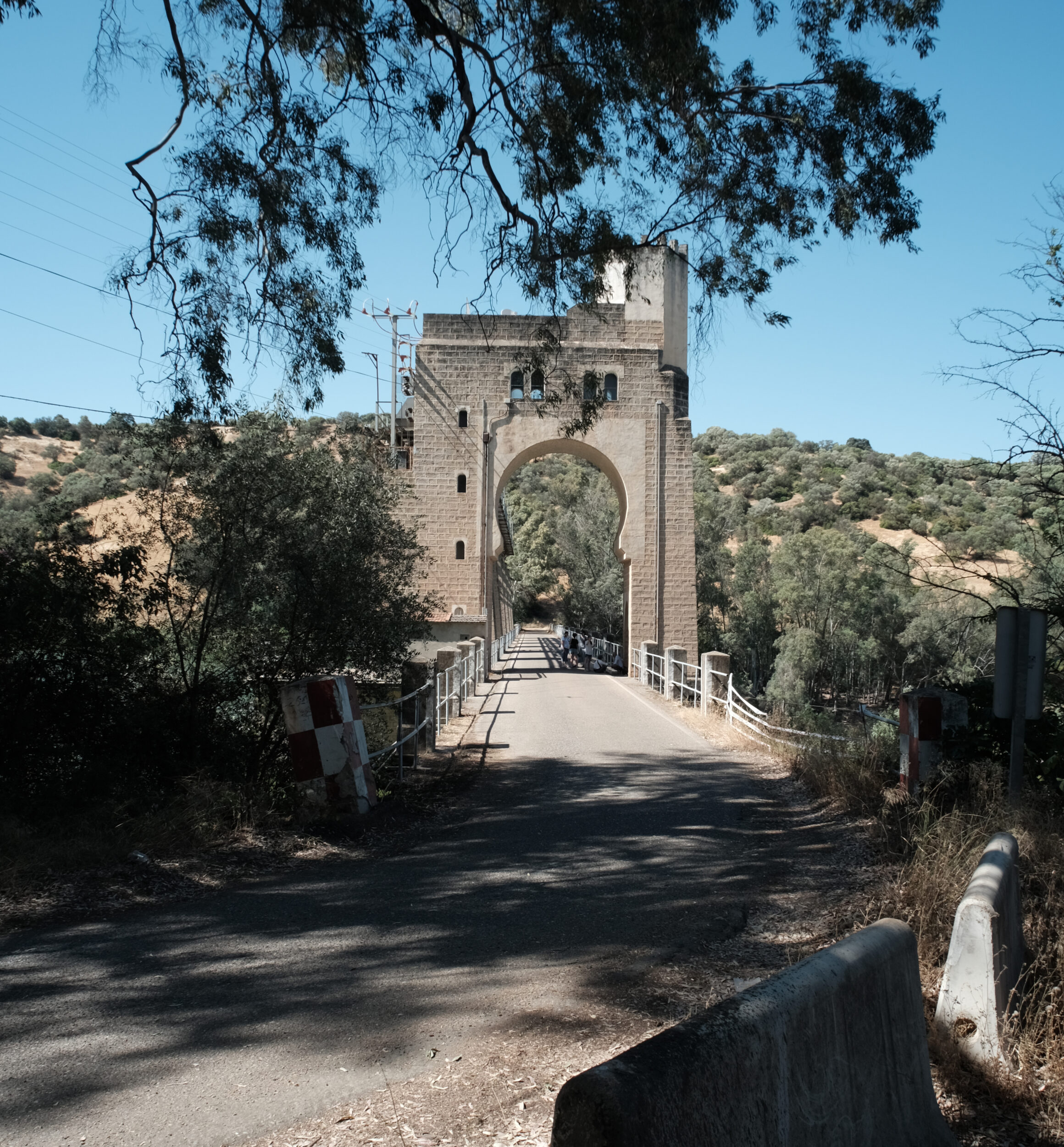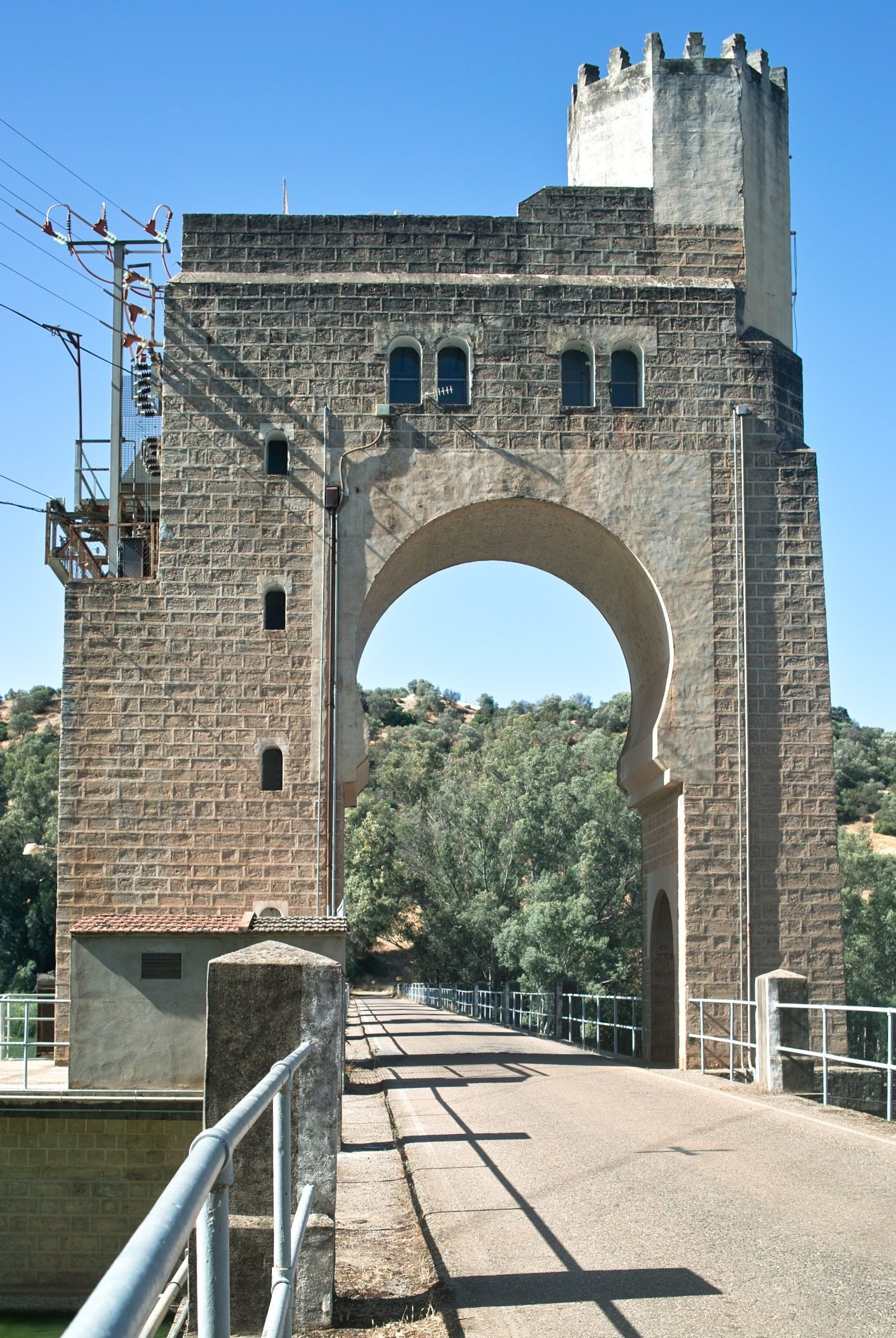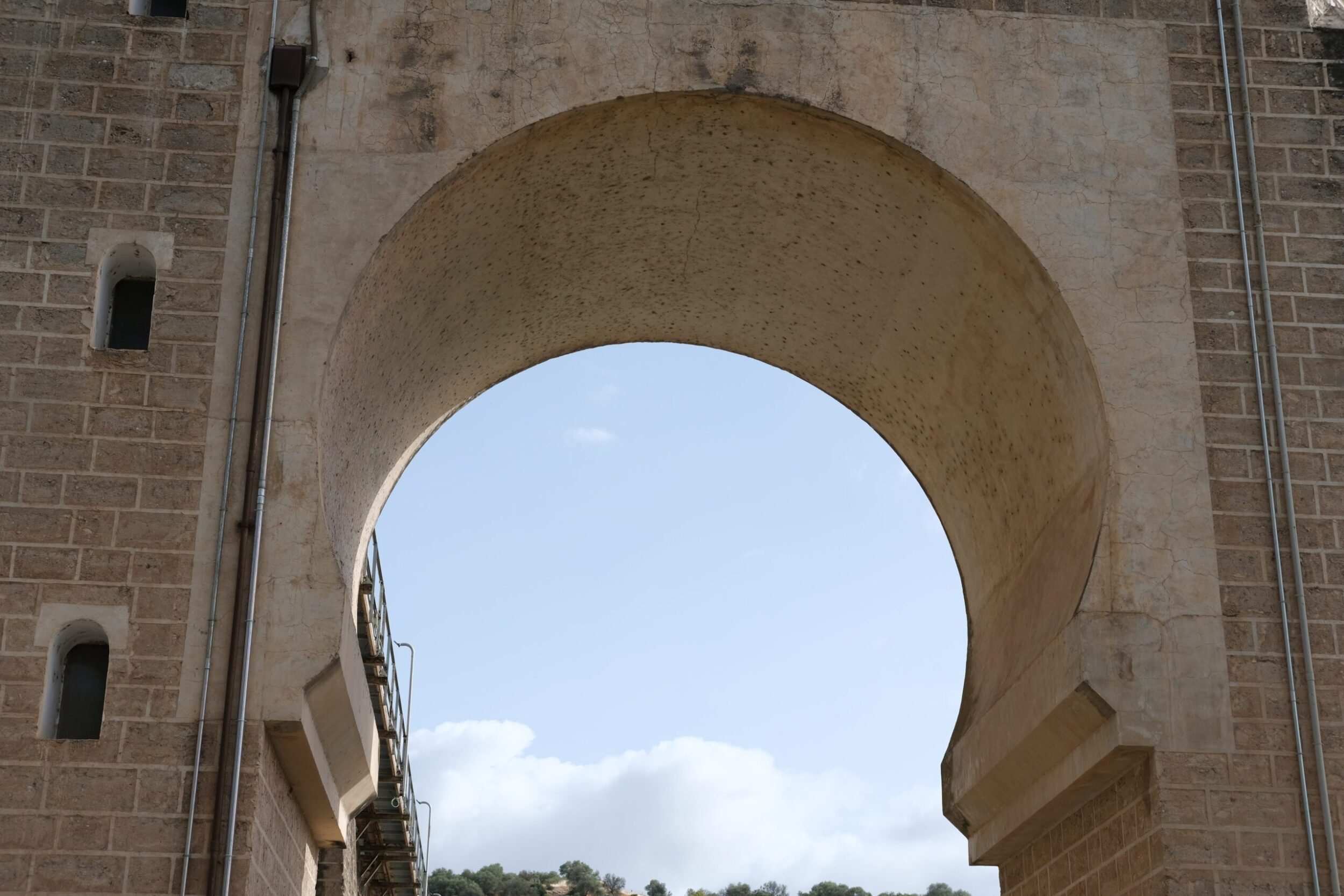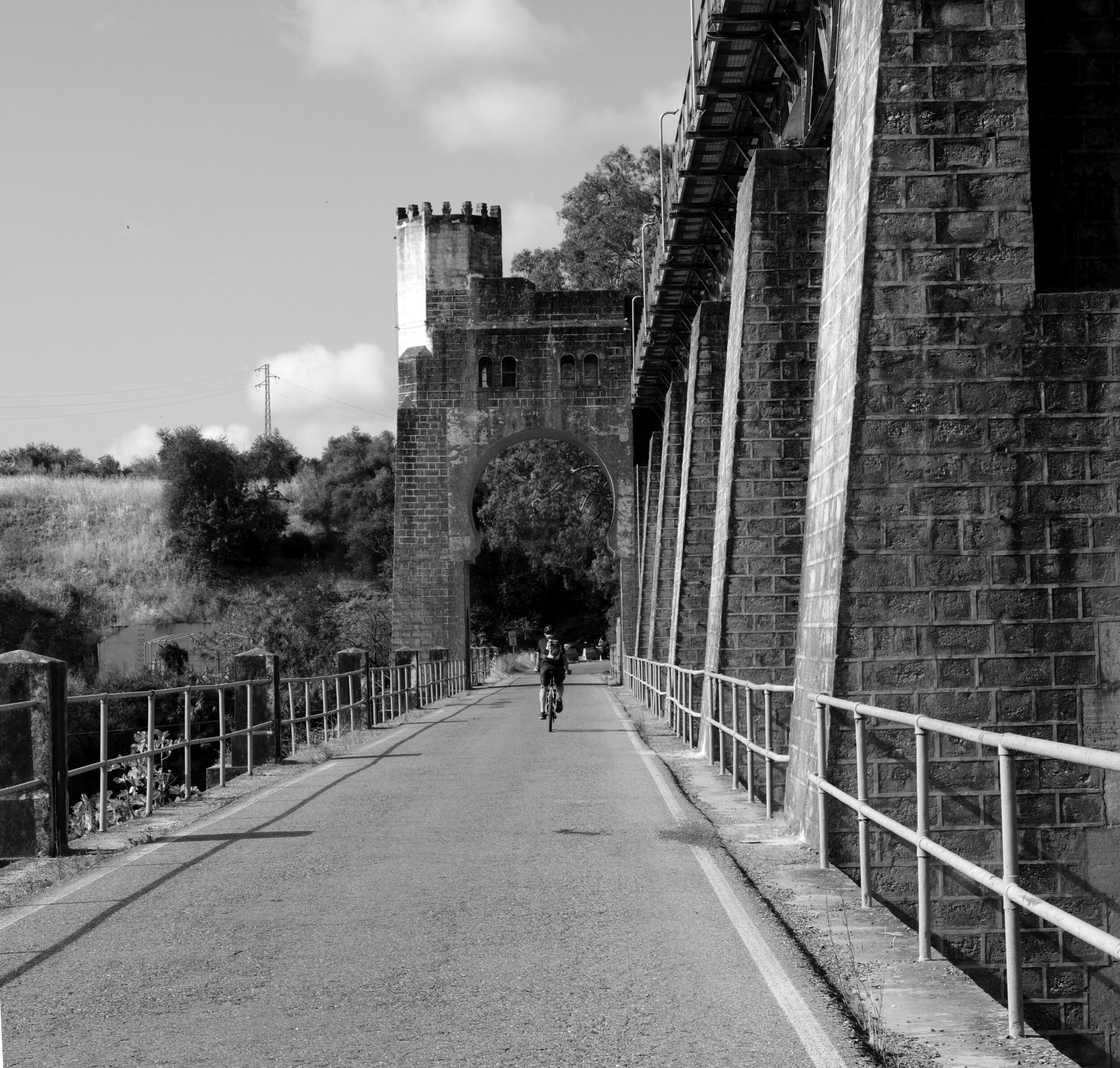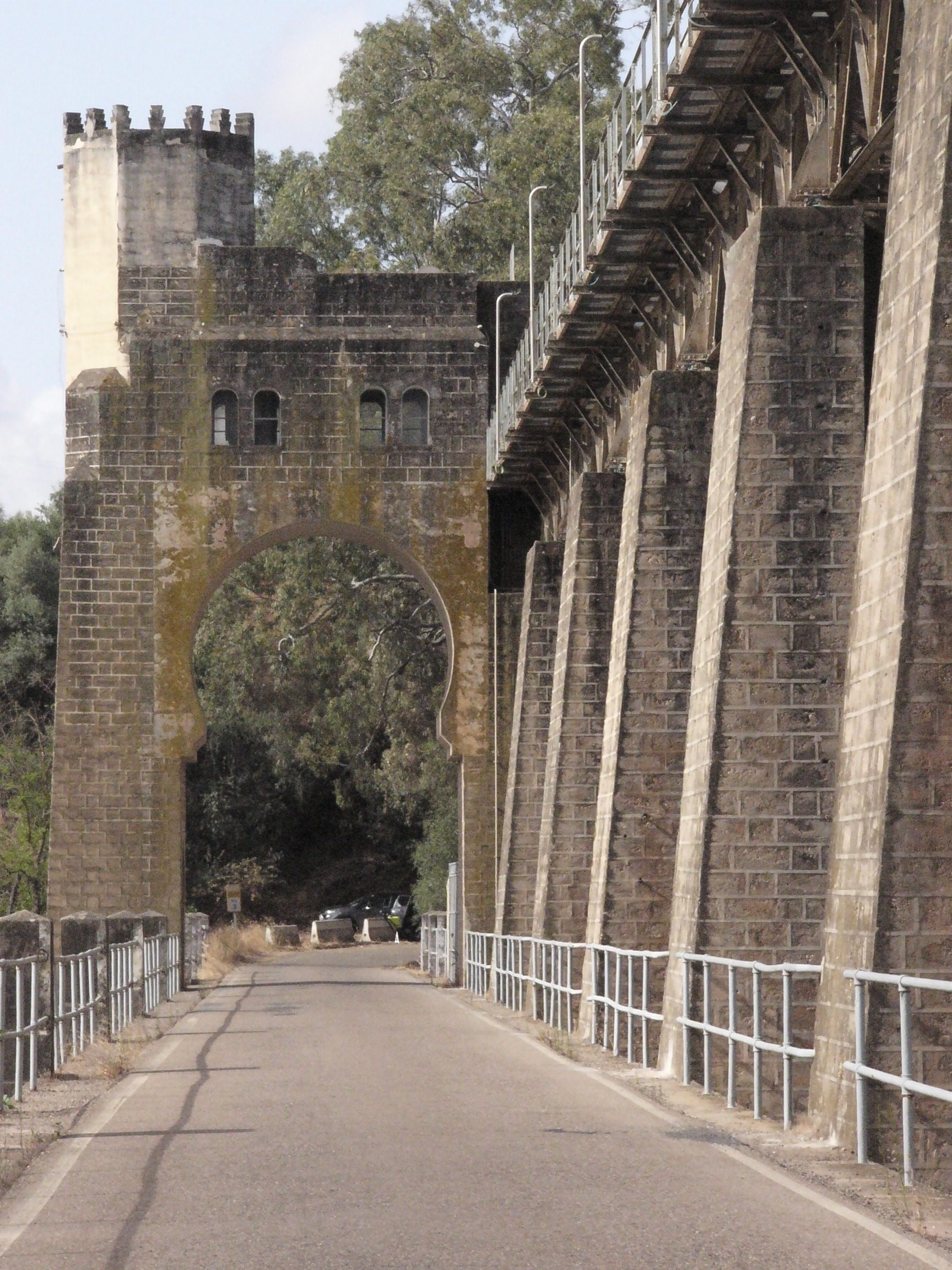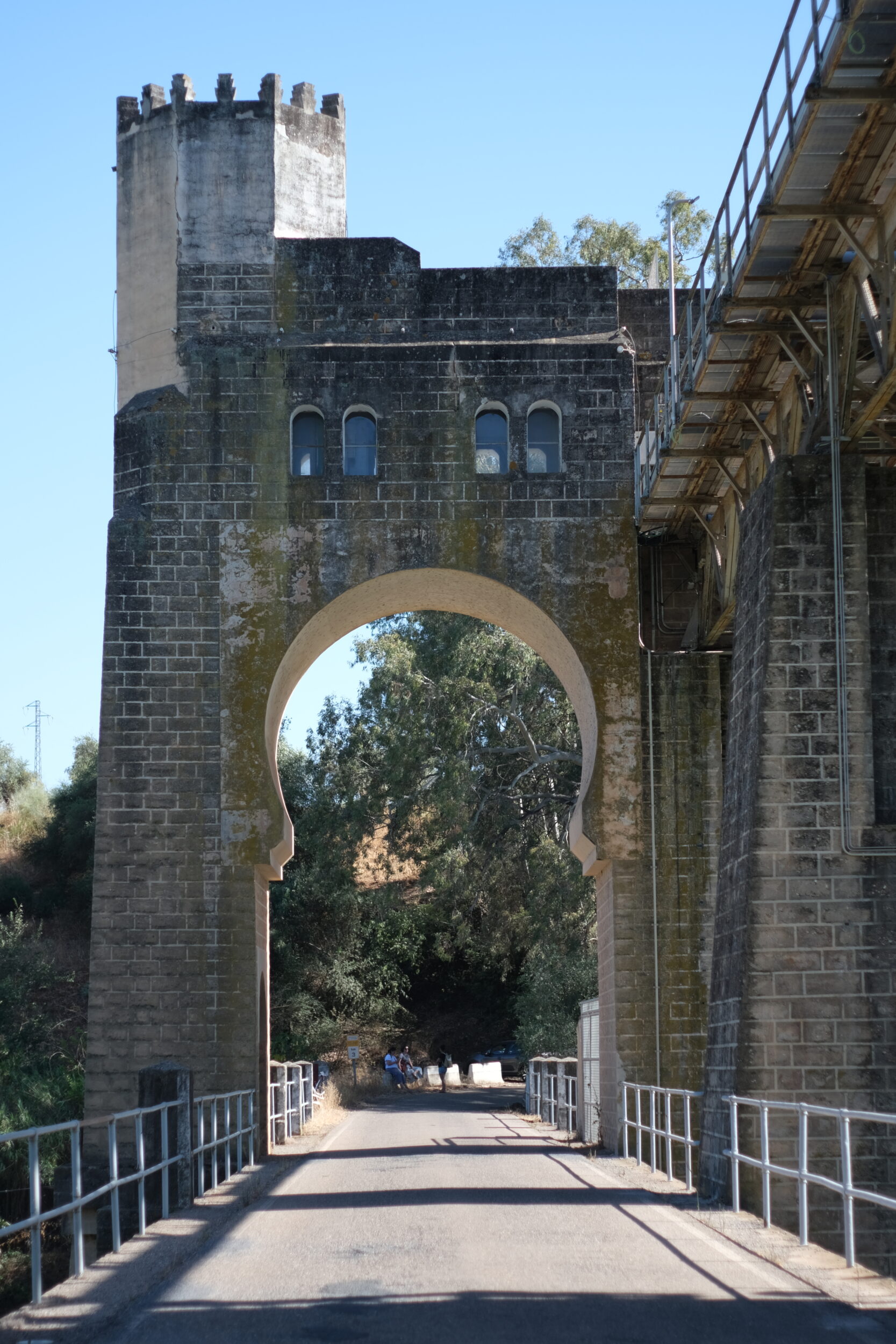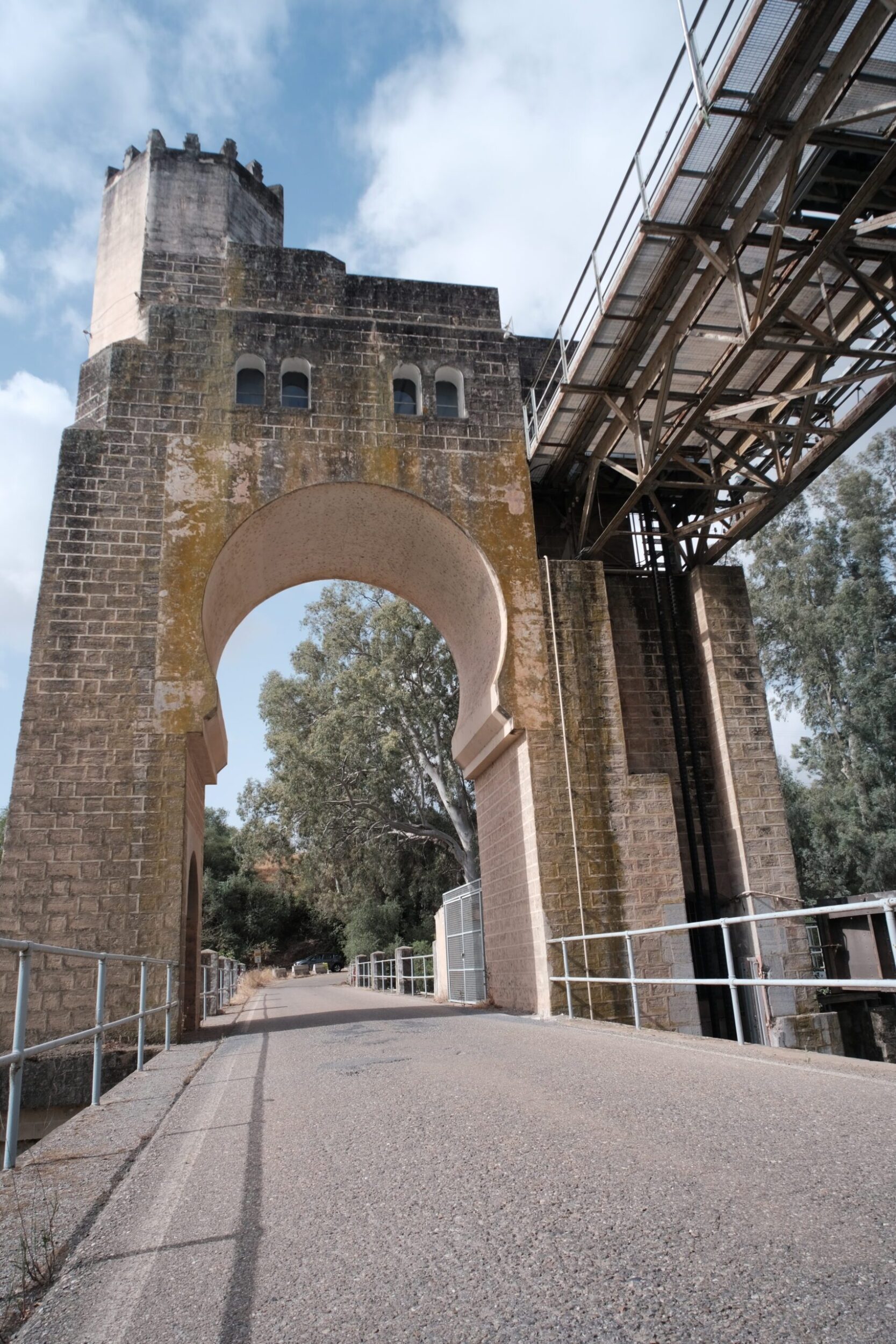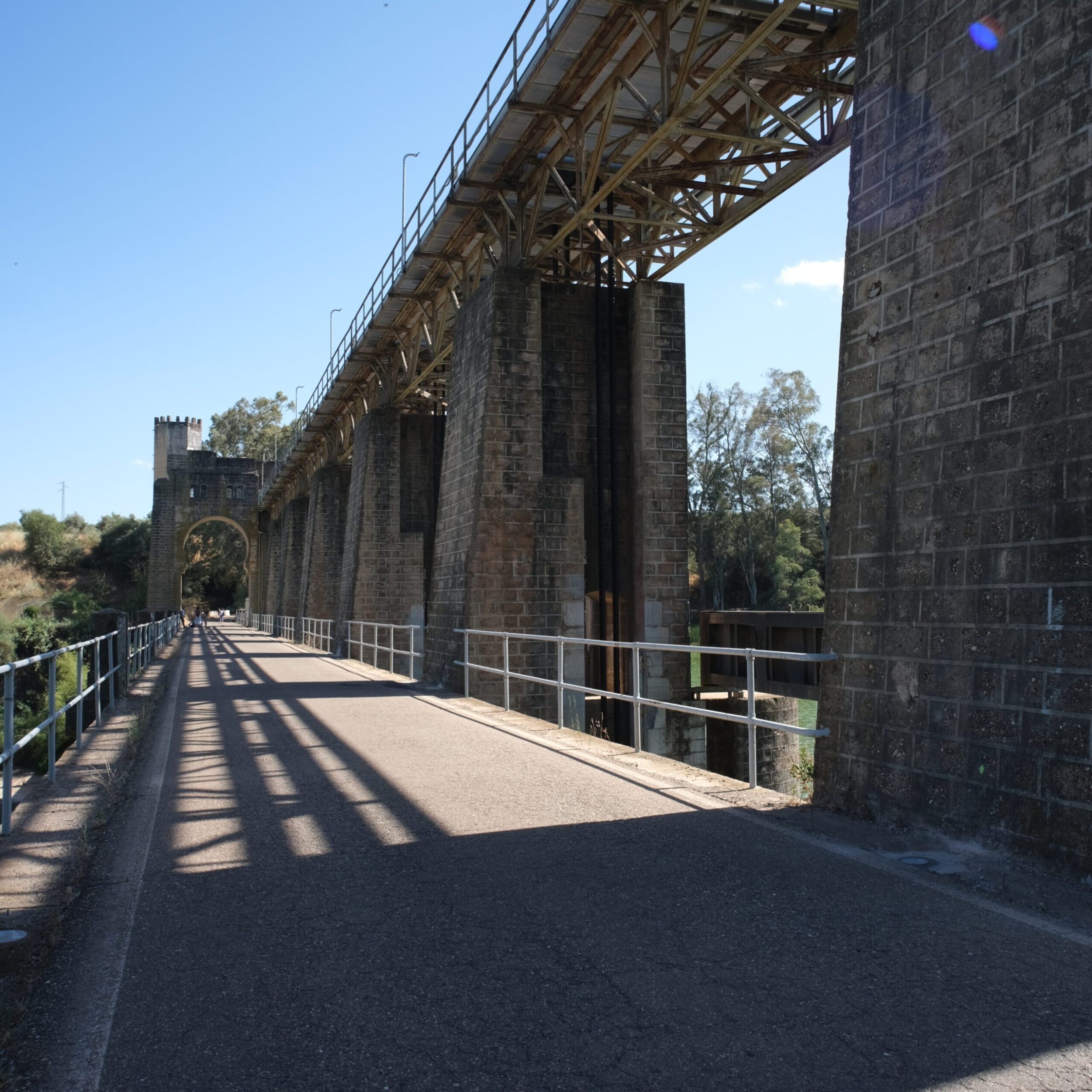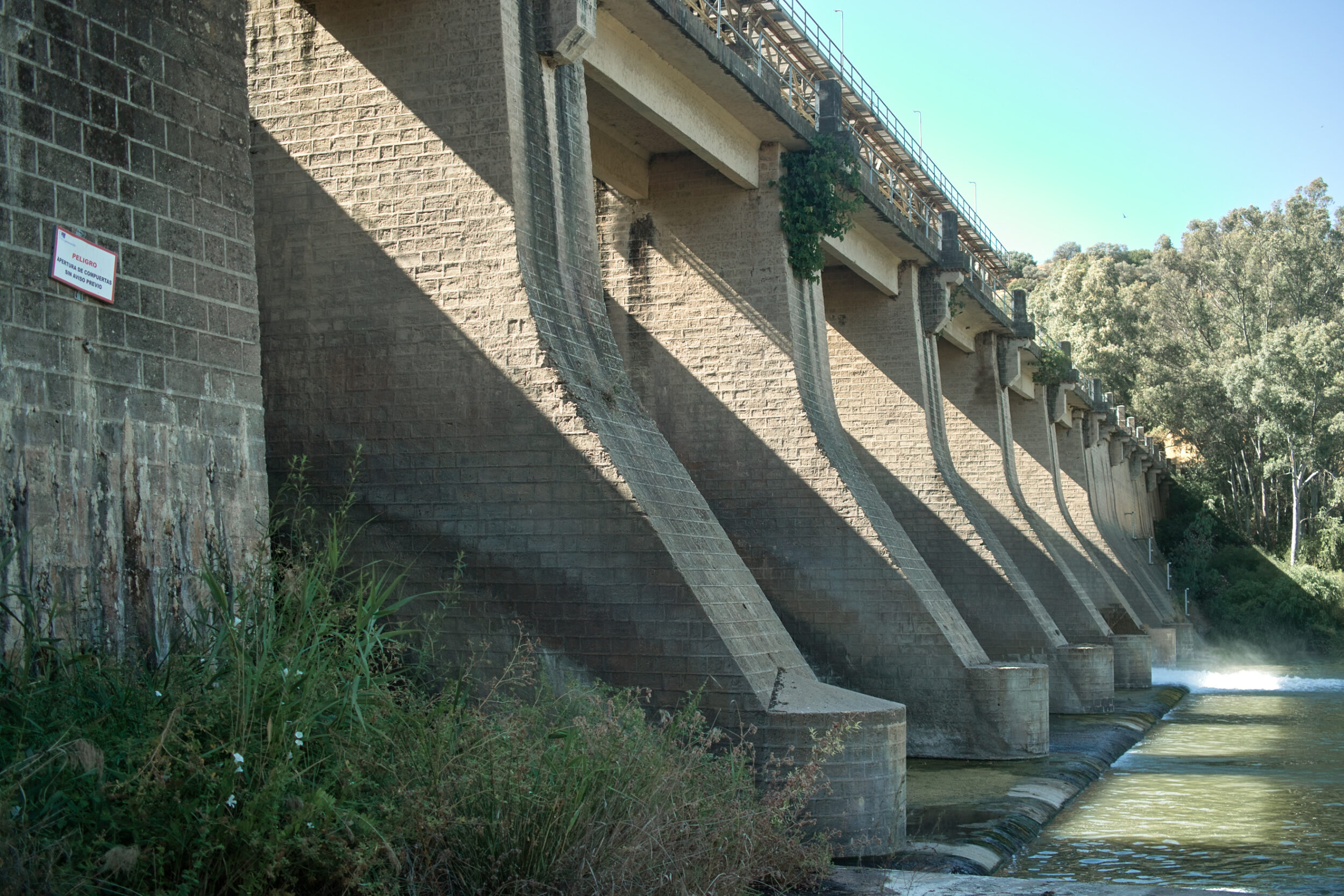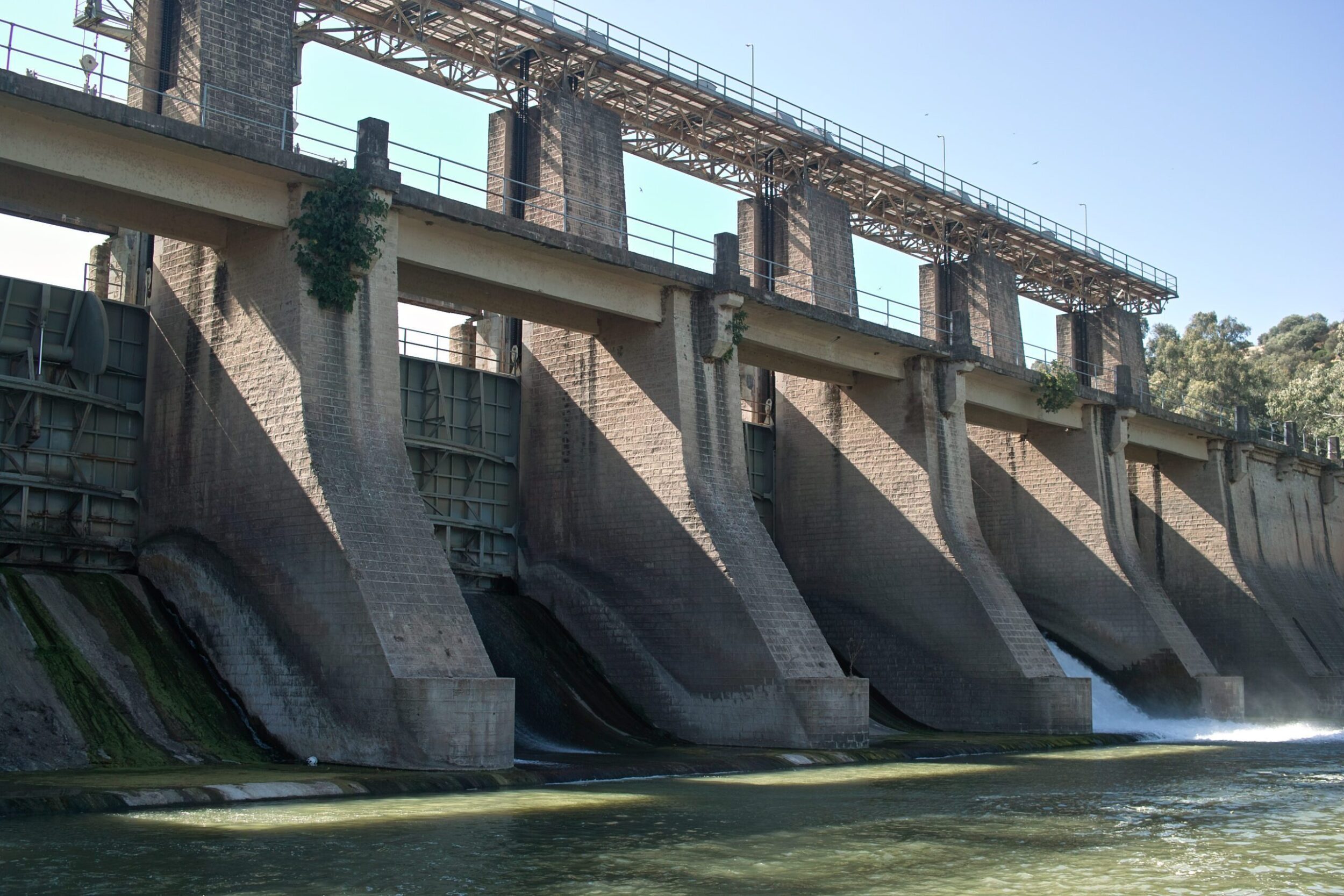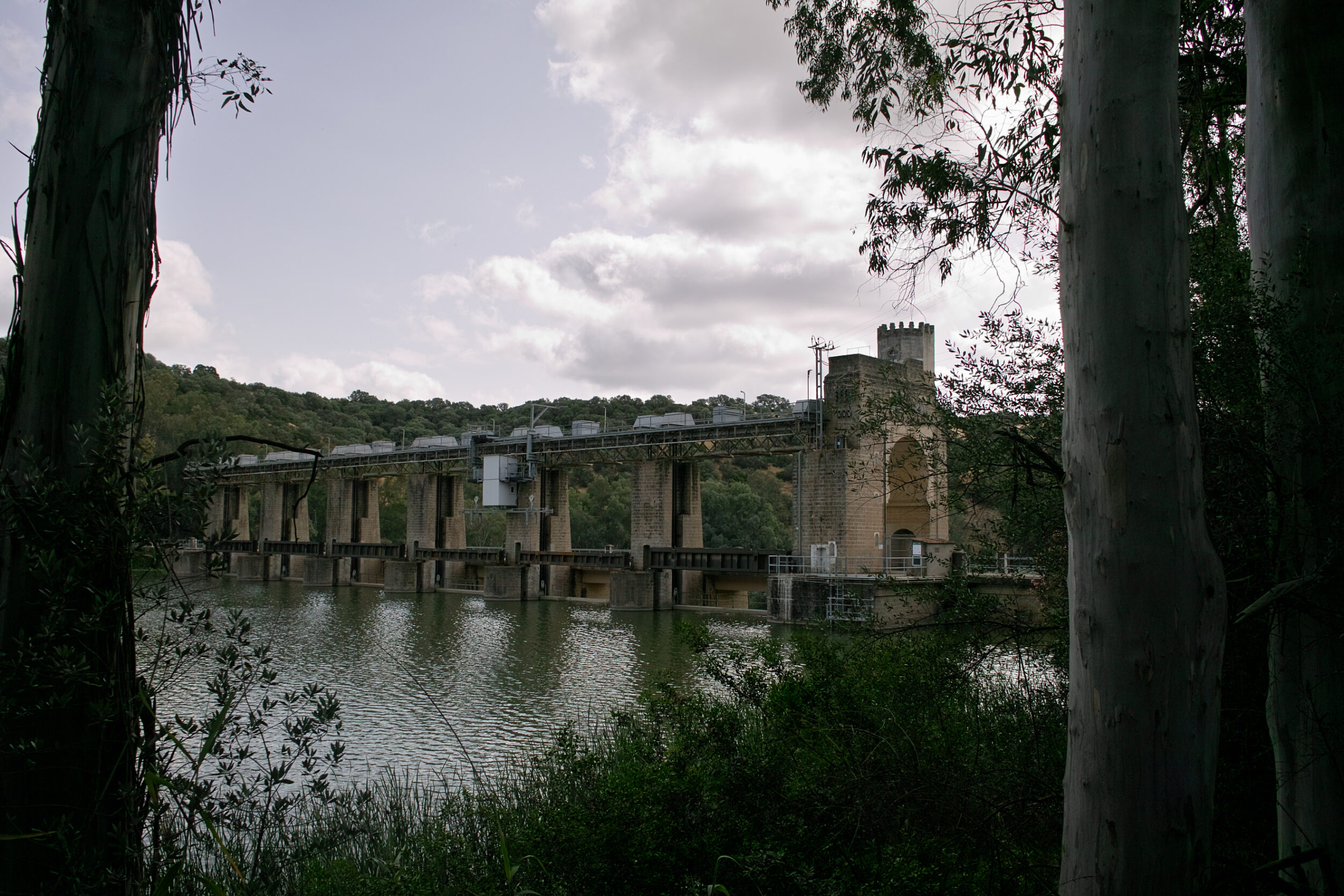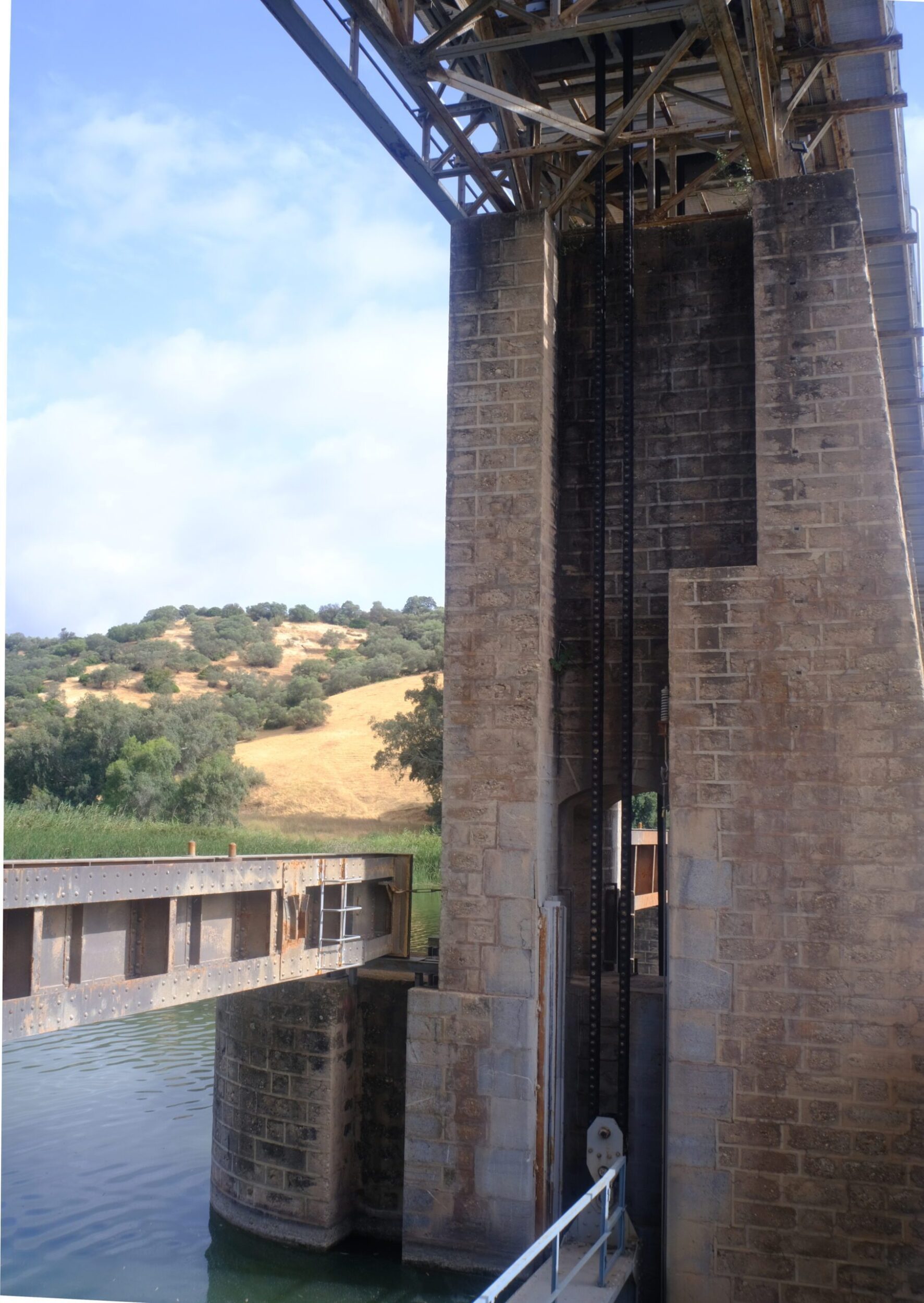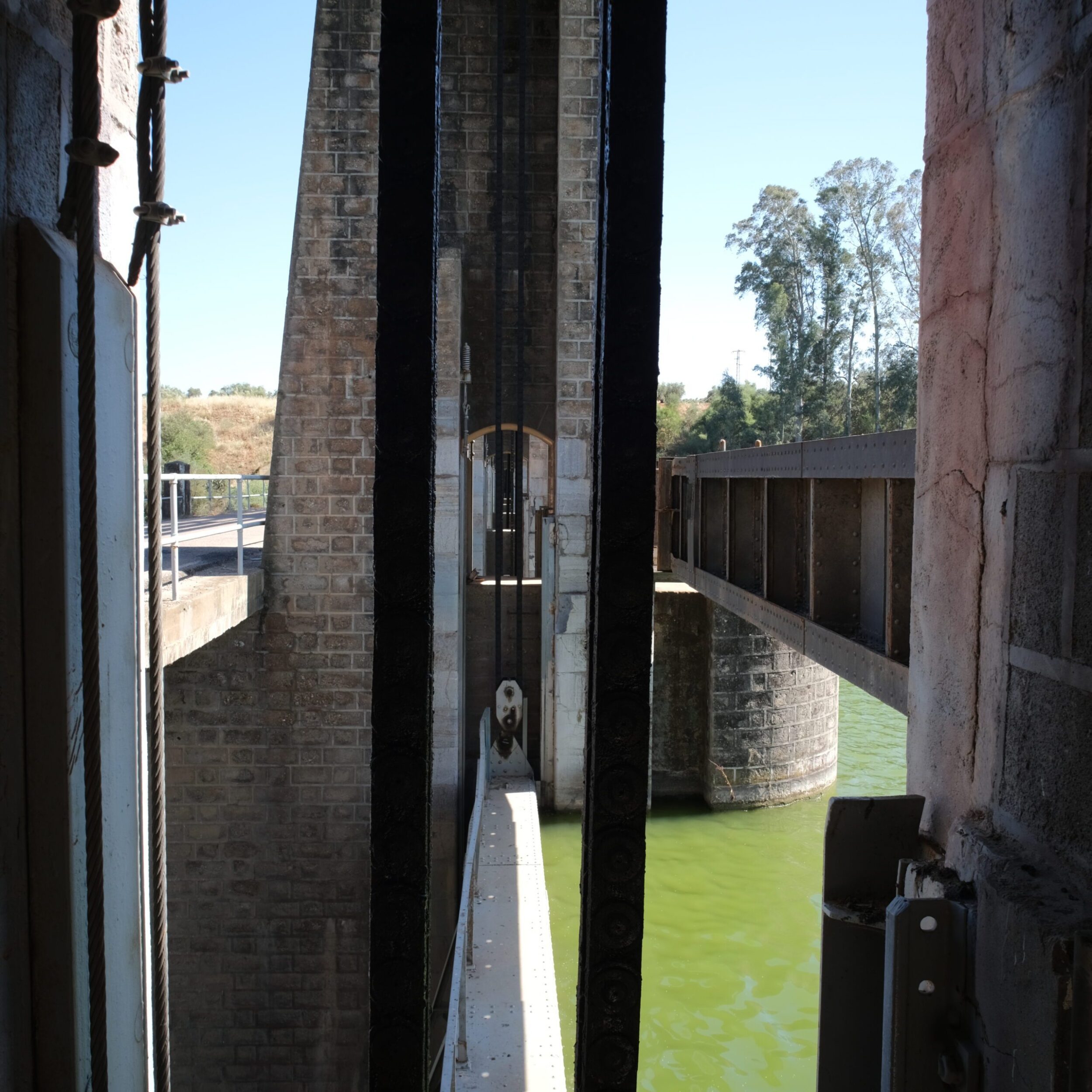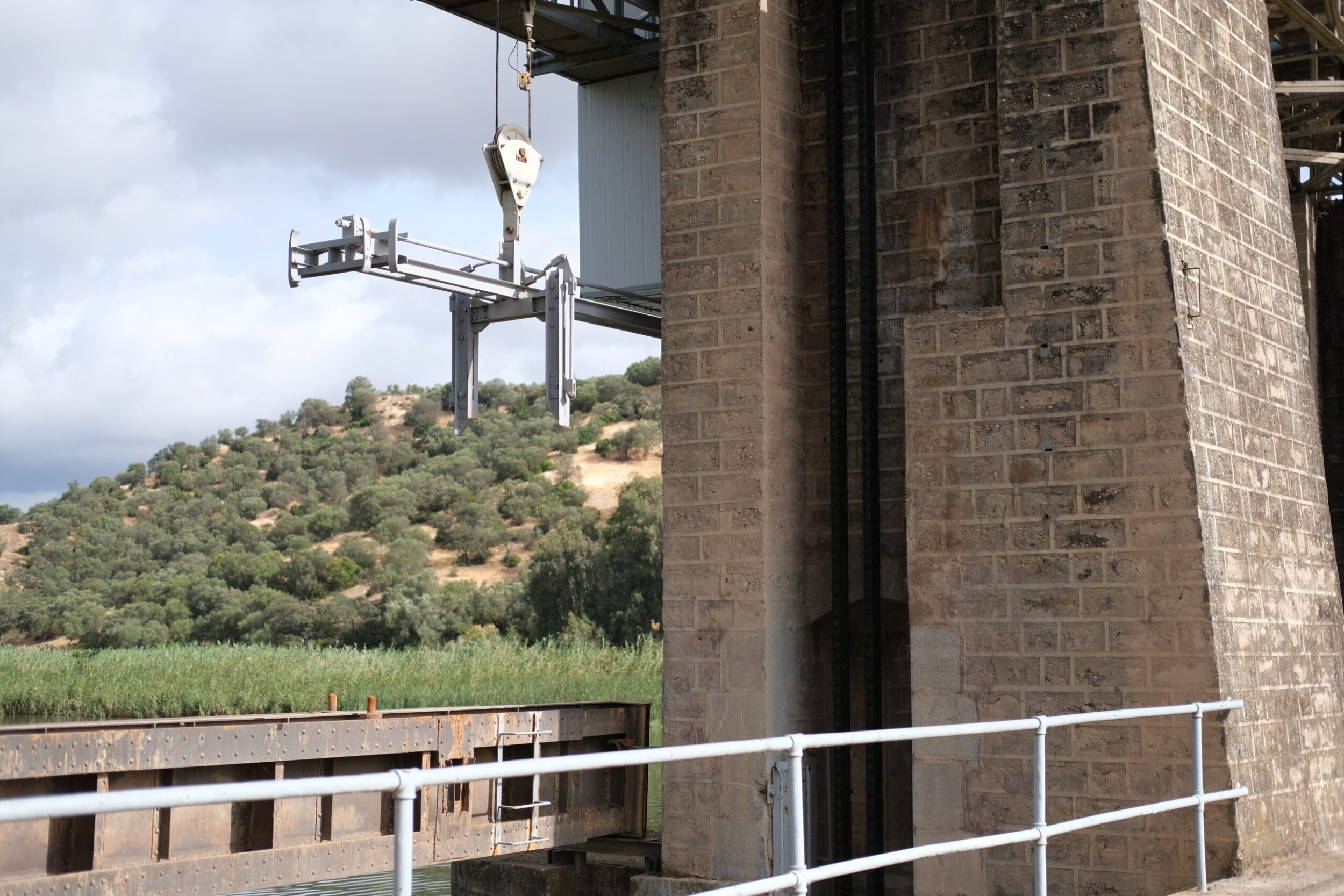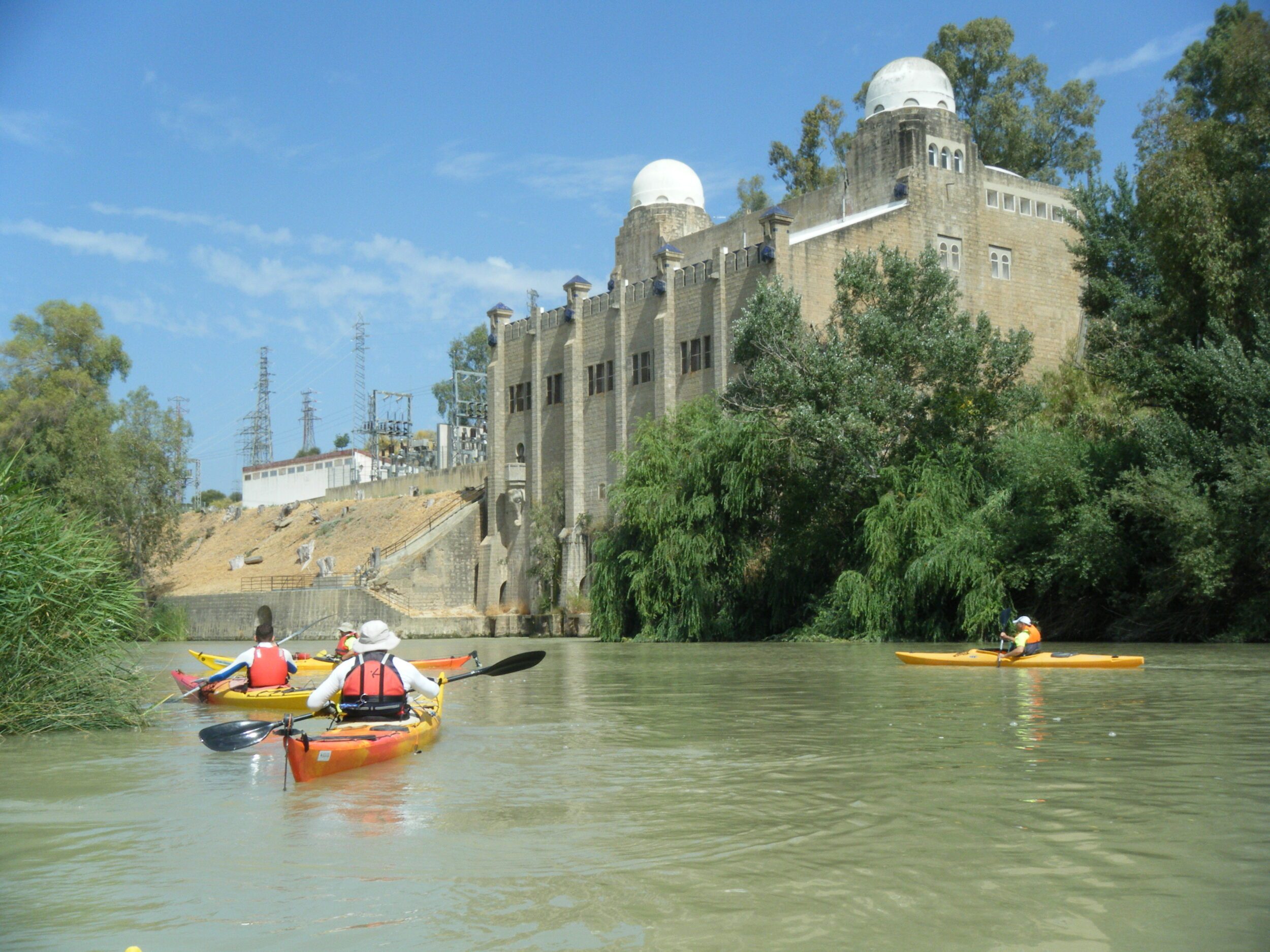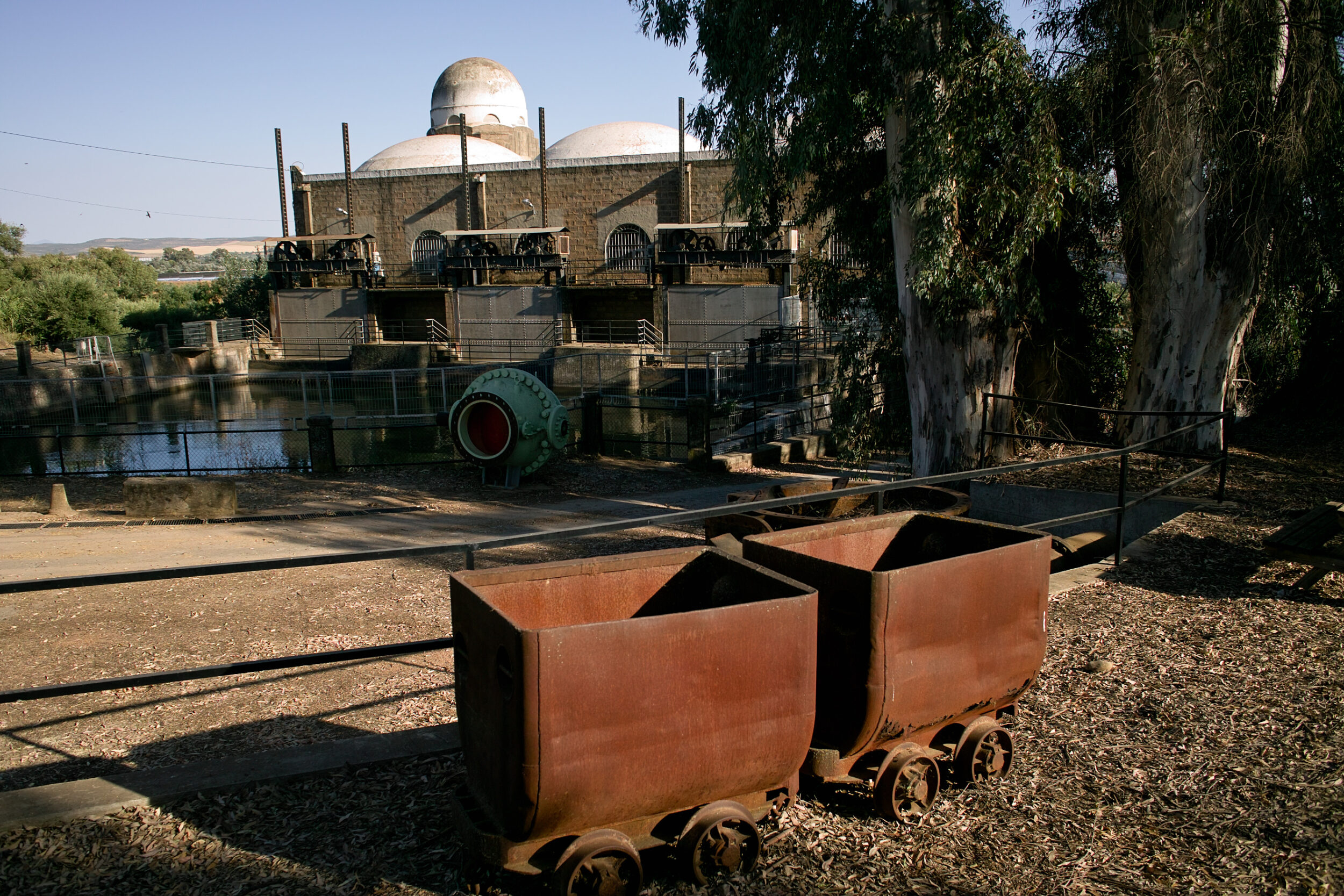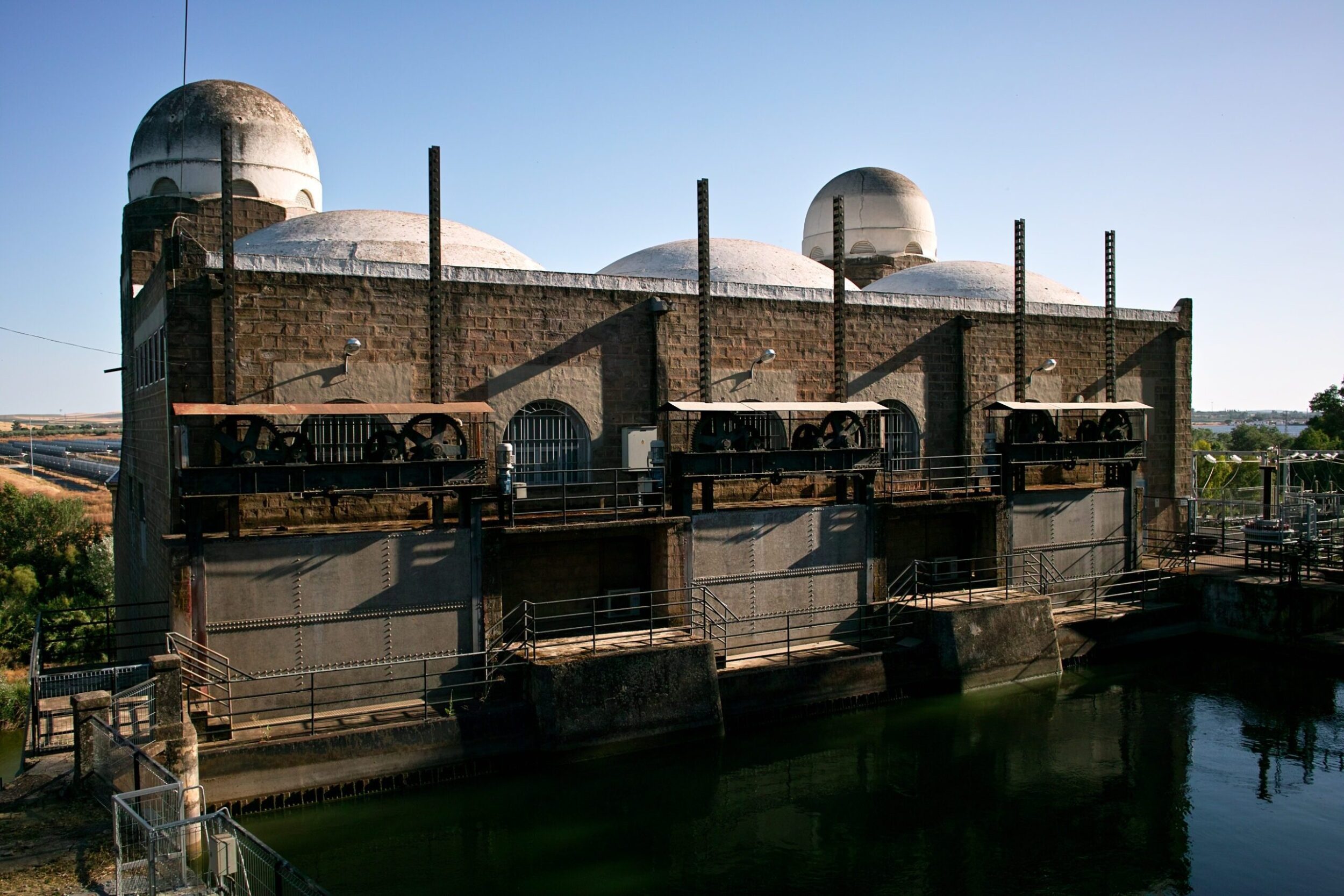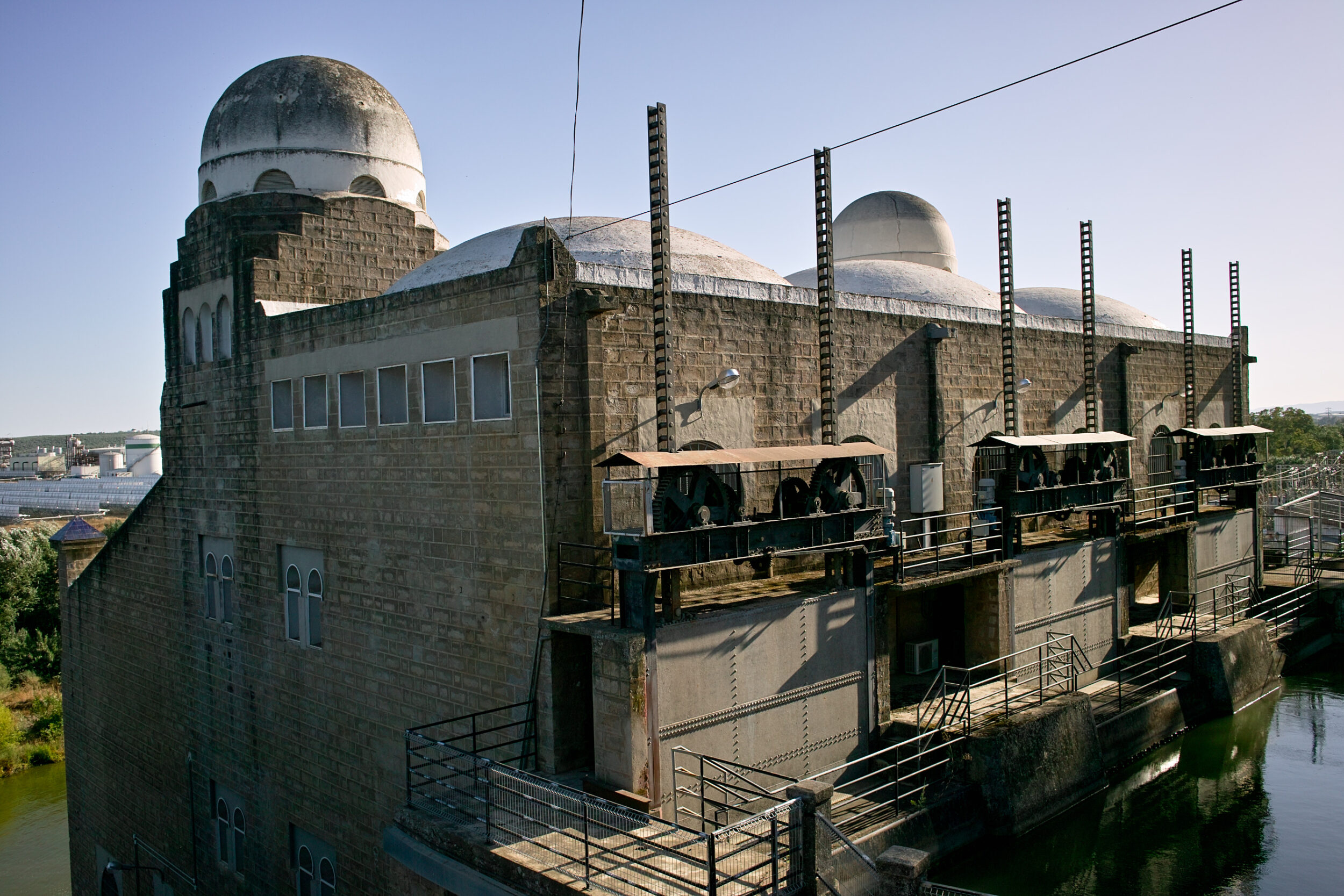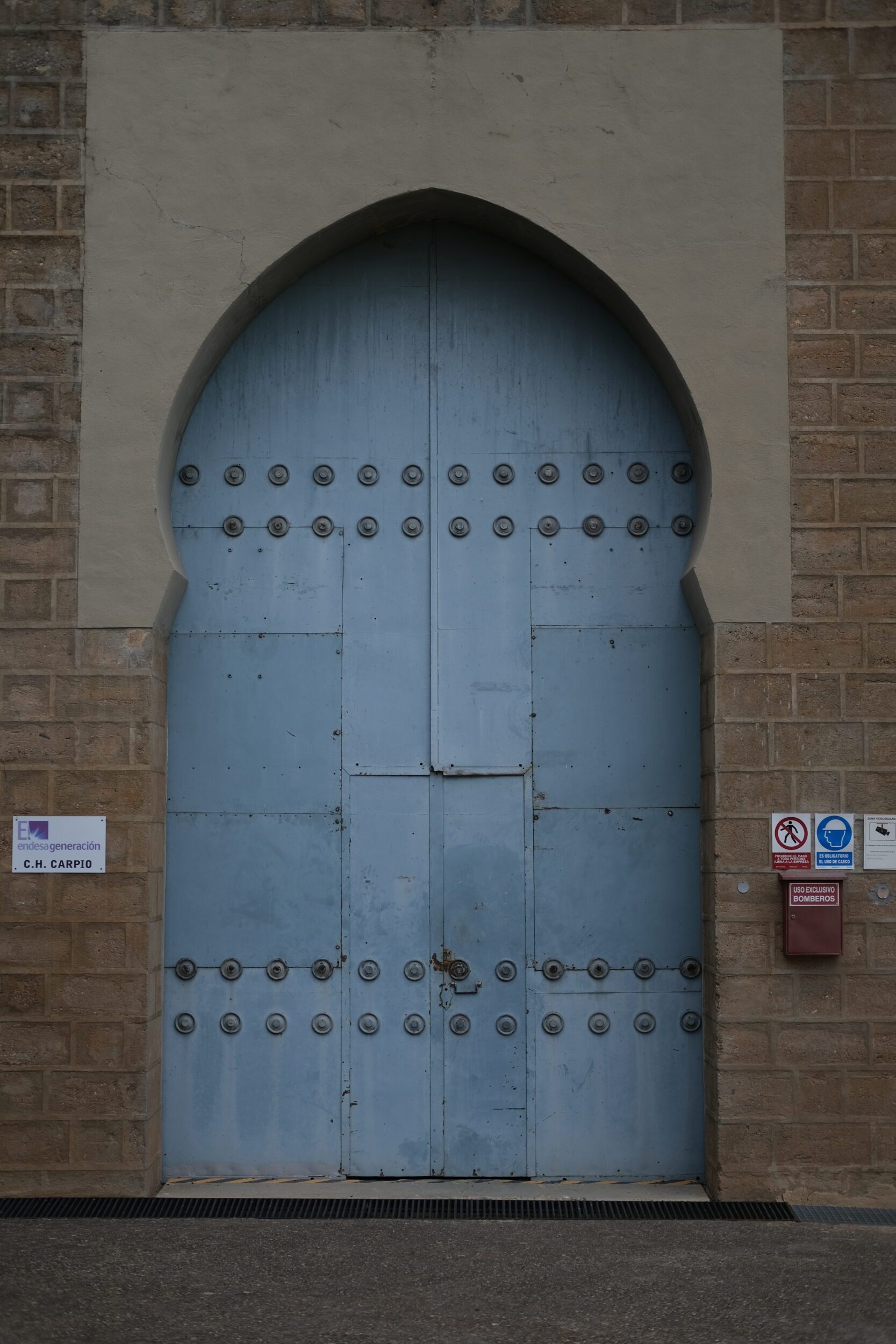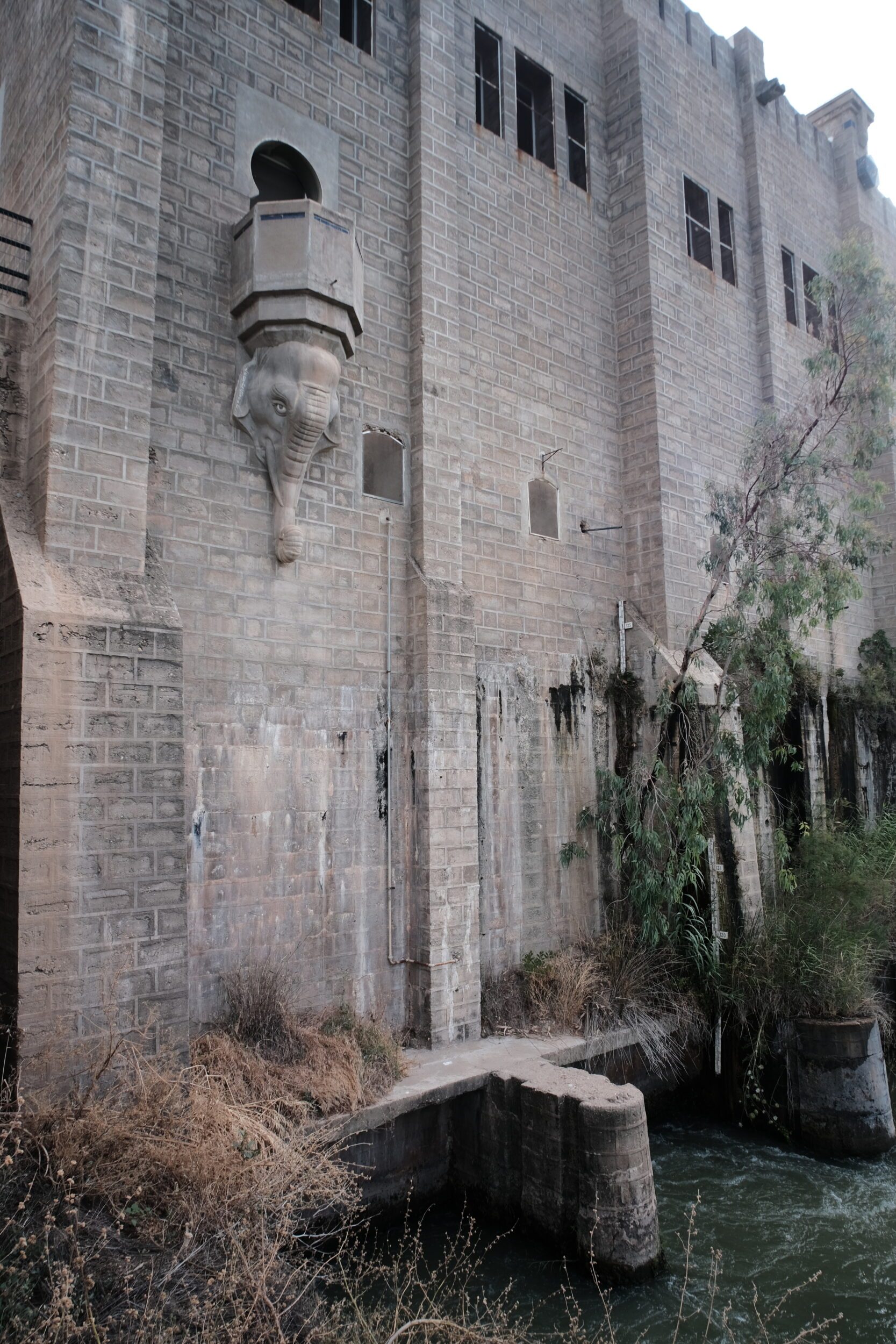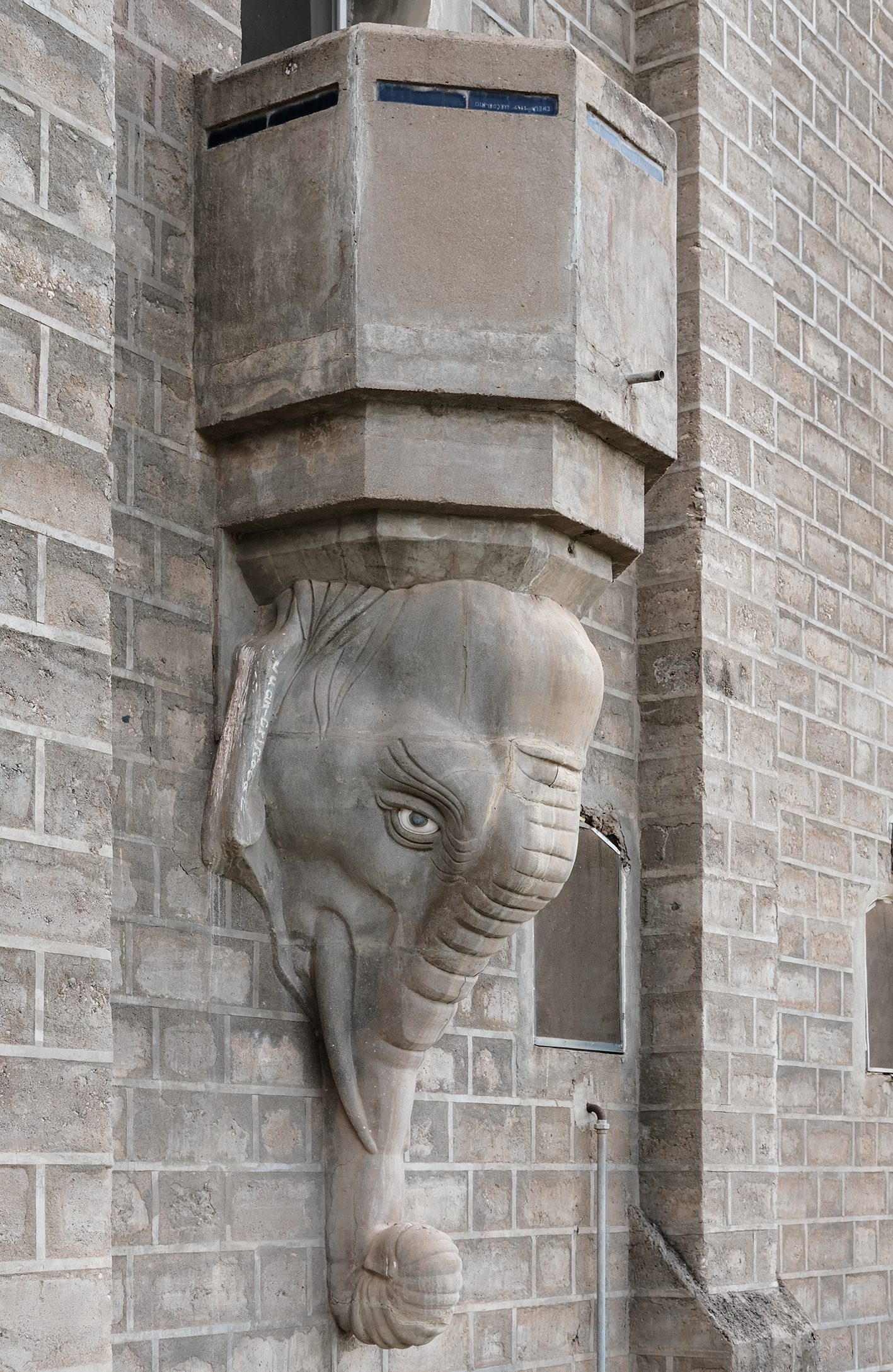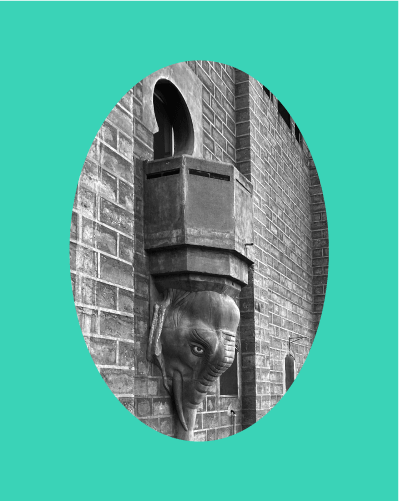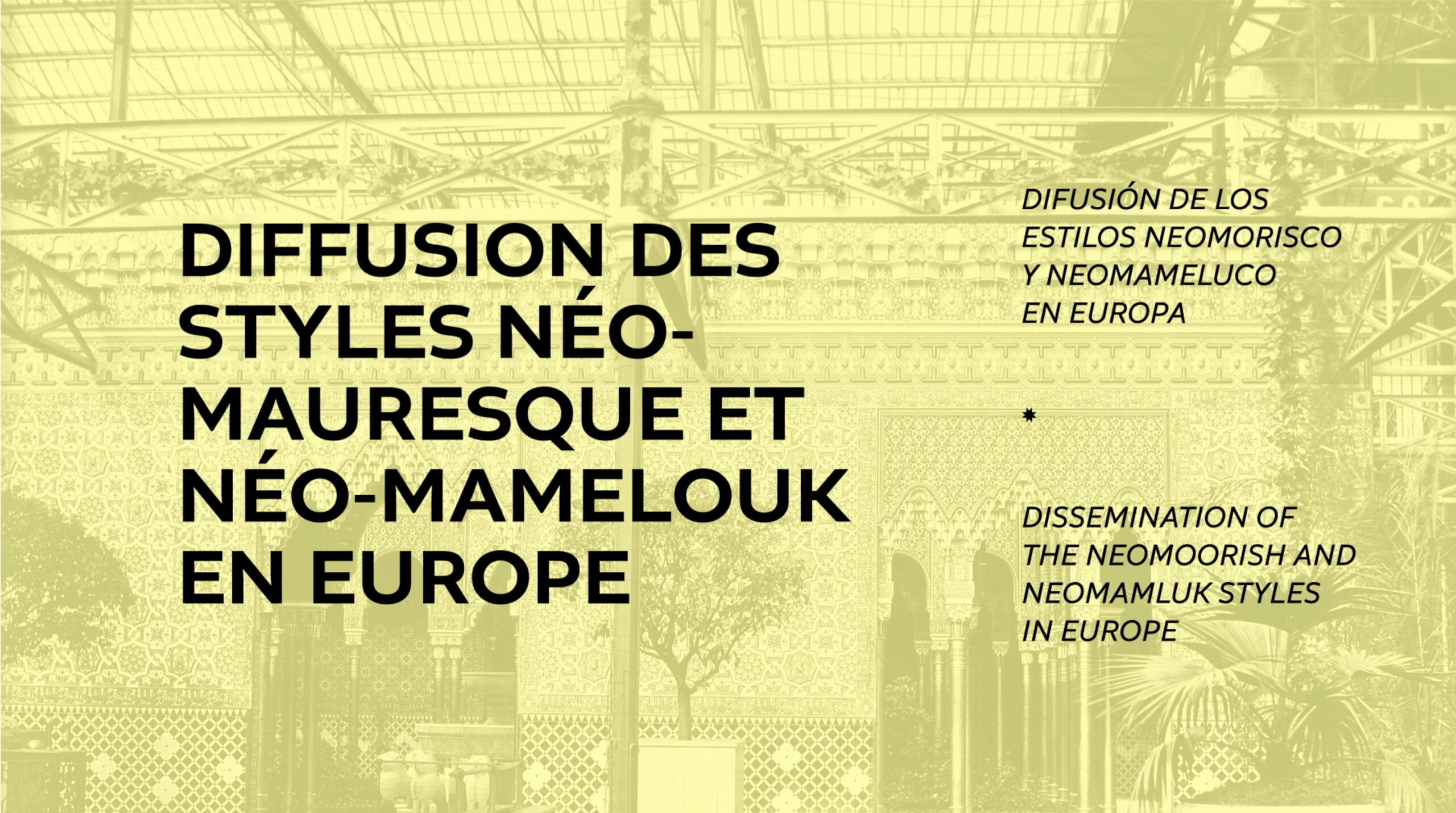

Location
El Carpio, Spain
Year of Construction
1922
Architectes et artistes
Fernández-Shaw e Yturralde Casto (1896-1978), Cristóbal Juan (1898-1961)
History
Madrid-based architect Casto Fernández-Shaw e Yturralde (1896-1978) is thought of as one of the leading representatives of the Spanish futurist movement. That is why the neo-Moorish style he adopted for El Salto power station at El Carpio, one of his first accomplishments, is so surprising. In fact, he did not draw upon this historicist language again until the post-Civil War period, in his designs for the central marketplace (1941) and the La Equitativa insurance company building in Tetouan, Morocco (1945).
Engineer Carlos Mendoza Sáez de Argandoña (1872-1950), president of Mengemor and the Guadalquivir hydroelectric company, commissioned Fernández-Shaw to complete the architectural features of the dam and those of the power station associated with it. They were finished in 1922.
El Salto is a breathtaking, monumental project related to Fernández-Shaw’s “Monument to Civilization,” a colossal dam in the Egyptian style the architect imagined in 1918-19 to celebrate the end of the First World War. That project was never built, but the architect was awarded a bronze medal for the design at the Spanish national fine arts exposition in Madrid in 1920.
Prior to the construction of El Carpio dam, watermills operated on the site, on the river’s right bank. This run-of-the-river structure, equipped with sluice gates, acts both as a dam and a bridge. The structure is entirely made of concrete. It is faced in imitation-stonework concrete blocks with false joints resembling the spaces between cut stones, lain in what English-speaking masons call a “Flemish bond,” a pattern of stretchers and headers that also references the architectural language elaborated in Cordoba by the Umayyads (8th to 10th centuries).
Between the two abutments standing on the banks of the river, five interior buttresses frame the six sluice gates and support the bridge apron. On the right bank, the first buttress rises and to form a horseshoe arch framed by an alfiz, creating a monumental arched portal over the roadway. It is associated with an octagonal turret that was crowned by a dome, in earlier times, housing the stairway leading to the control room and upper catwalk. The dome, portico, double windows, and bridge railing support pillars, all based on the Oriental style, evoke the architecture of Almohad forts (12th-13th centuries). El Salto bridge is somewhat reminiscent of the portico of the famous Nile River dam-bridge built by Eugène Mougel Bey in the late 19th century.
The power station is located a kilometer downstream from the dam to take advantage of the drop in altitude between the two meanders of the river. Rectangular in shape and symmetrically designed, the structure is covered with a series of brick domes Fernández-Shaw imprecisely described as being of Saracen inspiration. The riverfront façade, built high due to the different levels of the ground, is divided into six spans by impressive buttresses. Four of them are adorned with blue enamel cabochons, and crowned by diamond-point pinnacles also covered with ceramic plaques. The other three bear gargoyles. Between the buttresses, more blue ceramic plaques mimic a crenellated parapet.
Each span is provided with a trio of rectangular windows. Only the upstream span contains an additional window opening onto a balcony. The latter is supported by a console shaped like an elephant’s head. This is the most original decorative element off the façade. It was carved by Grenada sculptor Juan Cristóbal (1898-1961). According to Fernández-Shaw, the elephant symbolizes an animal even stronger than the horse, the usual symbol of power. Inside, the capitals of the turbine room are also remarkable.
Between 1920 and 1931, following El Carpio, Fernández-Shaw built the dams at Alcala del Rio, El Encinarejo, and Jandula. For these structures, he abandoned any reference to Orientalism for a style that was a mixture of expressionist futurism and the avant-garde.
The El Salto dam and power plant won the gold medal in architecture at the 1925 International Exhibition of Modern Decorative and Industrial Arts in Paris. In 2003, the Spanish Ministry of Culture listed it as a “cultural interest asset.”
Artistic looks
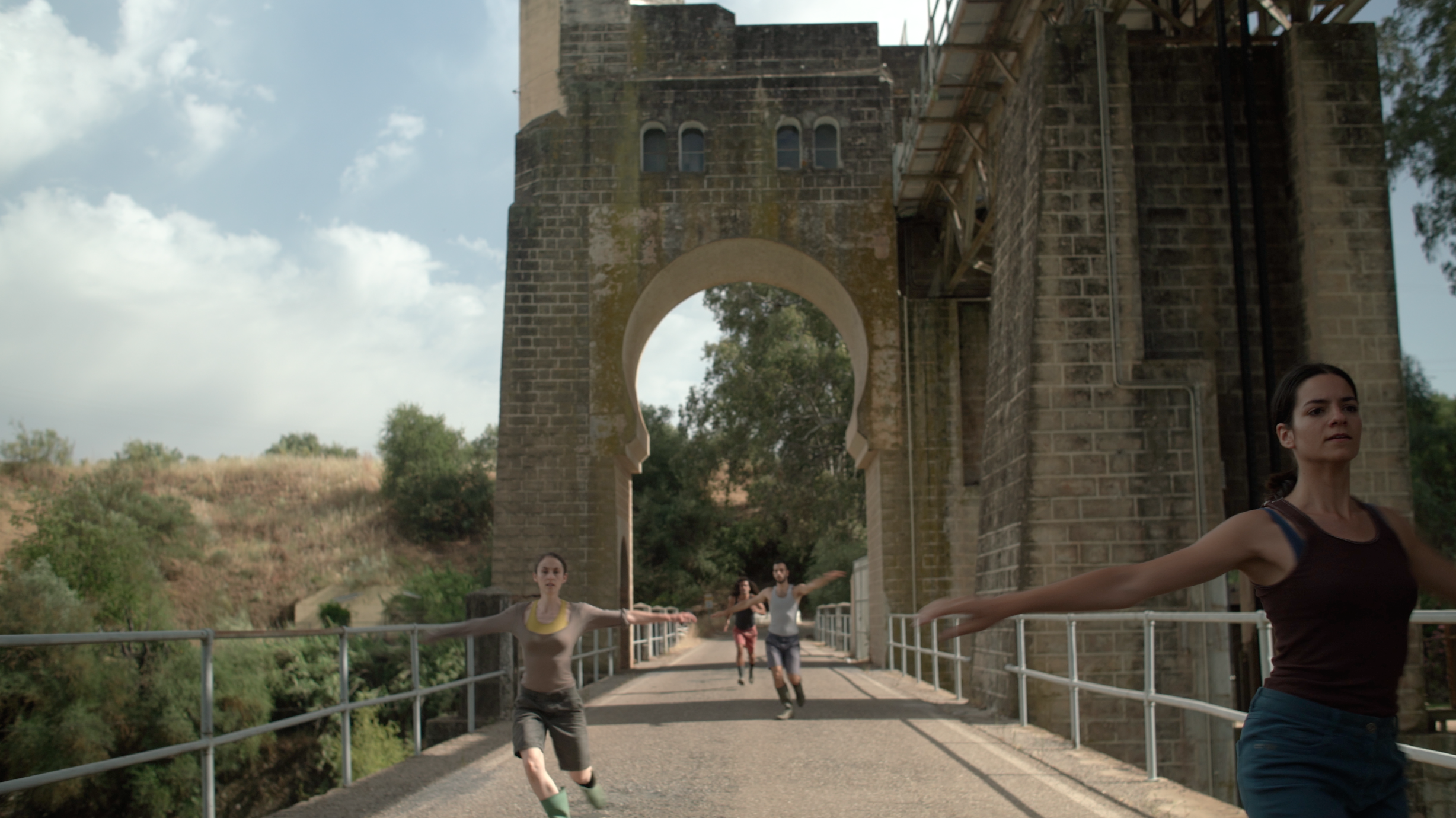
The artistic project Noria by choreographer and dancer Anna Chirescu draws inspiration from the hydraulic machines that have been installed in El Carpio in order to weave a narrative around the imagination of the place, encompassing elements of constraint, relaxation, stillness, and spinning.
Co-direction
Anna Chirescu and Florence Pierre
Choreography
Anna Chirescu
Editing and Styling
Florence Pierre
Image and music
Gordon Spooner
Dancers
Anna Chirescu, Miguel De Sousa, Catarina Pernão, Carlo Schiavo
Licence
CC-BY
Words of people
French transcription
English transcription
Spanish transcription
About this audio
The words of an ornithologist, a historian, dancers and local authorities reflect the many ways in which this unusual monument is viewed.
Interviews and writing
Clara Ilham Álvarez Dopico, Juliette Hueber et Bulle Tuil Leonetti
Editing
Éléonore Clovis
Audio mixing
Alban Lejeune, It Sounds Good
Music
Perro Cruzado et El Arte de Escuchar par Gnawledge (Album Granado Cordoba)
Licence
CC-BY-NC-SA


